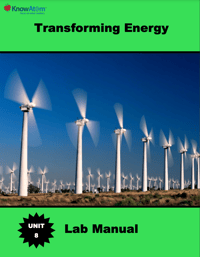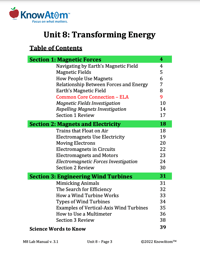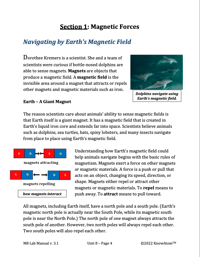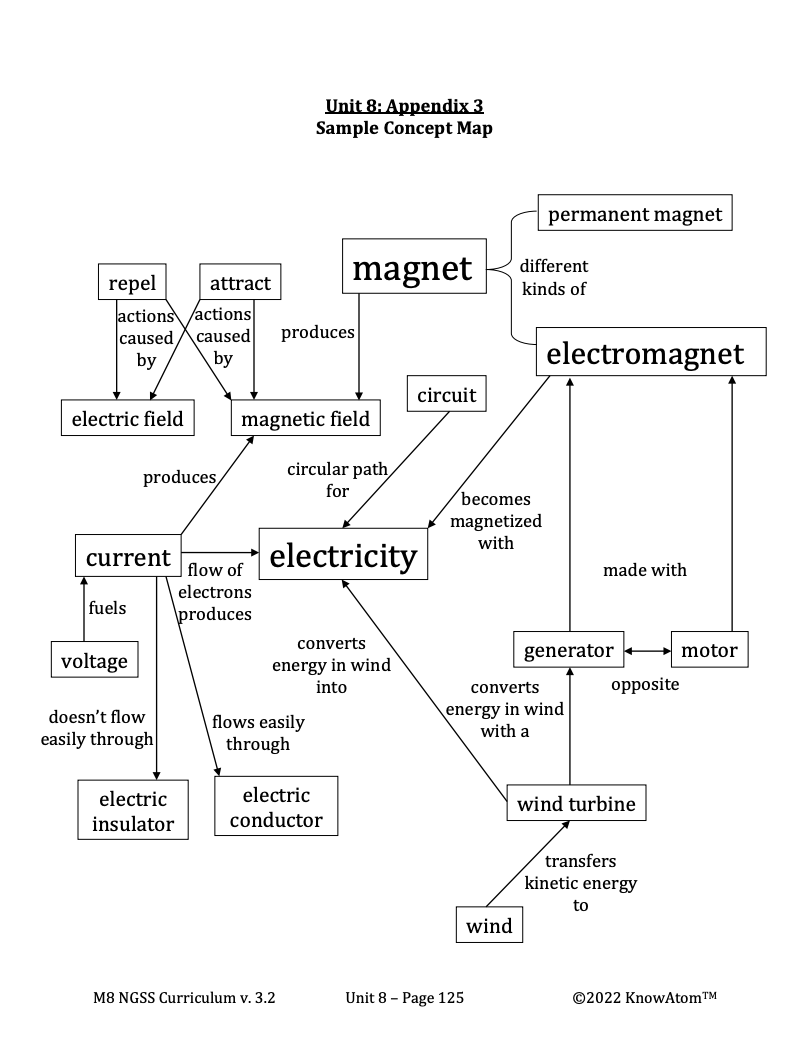Science background gives teachers more in-depth information on the phenomena students explore. Below is an excerpt from this section on magnetism and energy.
Forces and Energy
Imagine you have two magnets. When they are within each other’s magnetic fields, they form a system because they interact with one another by exerting a force on each other. For example, if you orient the magnets so that their like poles are facing each other, they will repel, pushing away from each other.
Now imagine that you push those repelling magnets toward each other. You have to use energy to overcome that repelling force to move them together. As you push them, you apply a force to the system that transfers the energy from your hands into the system. In other words, your pushing force provides an input of kinetic energy into the system.
That input of kinetic energy is stored in the system as potential energy. You can see evidence of this potential energy when you let go of the two magnets and they move apart from one another. The potential energy stored in the system has been changed back into kinetic energy.
If you change the distance between the interacting magnets, you change how much energy is transferred into the system. For example, the closer you push two repelling magnets together, the more energy you need to use. This means more energy is transferred into and stored within the system. This will cause the magnets to move farther apart when you release them. In a perfect system, the total amount of energy is always conserved as it changes from one form to another. In other words, however much potential energy the system of interacting magnets has, that same amount of energy will change into kinetic energy as the magnets are released and move away from one another. However, in the real world, some of that energy is transferred out of the system. When energy is transferred, it moves into or out of an object or system. For example, if the magnets move across the ground, friction will transfer some of the energy out of the system. Friction is a force that slows motion whenever two objects rub against each other by causing some of the energy of the moving objects to change into heat.
Kinds of Magnets
Whether an object is a magnet is one property of matter. An object has magnetic properties if its electrons are behaving in a specific way.
Remember that all matter is made of tiny particles called atoms. Atoms are made up of even smaller particles, including protons, neutrons, and electrons.
Protons and neutrons are found in the nucleus, and electrons orbit the nucleus at different distances called shells. Protons have a positive charge (+), and electrons have a negative charge (-).
In non-magnets, electrons randomly spin clockwise or counterclockwise. In contrast, magnets have electrons that mostly spin in the same direction.
People can cause objects to become magnetized. For example, if you repeatedly rub an iron-containing object, such as a paper clip or a nail, with an active magnet, it causes that object’s electrons to align temporarily.
Magnets can also be created with the use of electricity, the flow of electrons through a conductor. Electromagnets are tightly wound coils of wire that produce a magnetic field when electricity passes through the wire. They are useful in various technologies because the magnet can be turned off and on. This is different from permanent magnets, which stay magnetized without electricity.
Electricity and Magnetism
Electricity is closely linked to magnetism. Charged particles change the space around them. They produce an electric field, which is the area around a charge that can exert a force on other charged particles. Similar to magnets, charged particles either attract or repel one another.
Particles that have an opposite charge attract one another within their electric field, while particles with the same charge repel each other within their electric field. Electrons are kept in orbit in their shells because the positive charge of the protons in the nucleus attracts the negatively charged electrons.
The strength of the field weakens with distance. Because of this, electrons in shells closest to the nucleus are tightly bound, while electrons in the outermost shell are much more loosely bound. When a force is applied, electrons in the outer shells can be pushed from one atom to another. Once that first electron has been pushed away from its atom, it moves to another atom.
This movement of electrons causes electrons to all move in the same direction as one another. Electrons can move more easily through some materials than others. Electric conductors are materials that allow electrons to pass through them easily. Metals such as copper and aluminum are electric conductors because they have electrons that are loosely held and therefore can easily be pushed from their shells by an outside force.
Electric insulators are materials that do not allow electrons to pass through easily because electrons do not easily separate from their atoms. Rubber and plastic are both good electric insulators. This is why electrical cords are covered in rubber or plastic. The electricity cannot travel through the rubber or plastic and is forced to follow the path on the aluminum or copper wires. Some materials are semiconductors, which means they can sometimes act as a conductor, depending on what other molecules are around.










